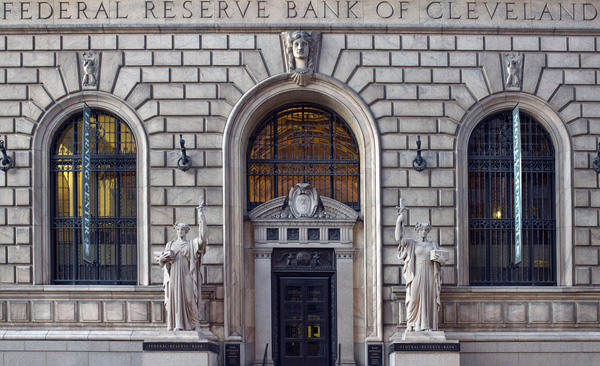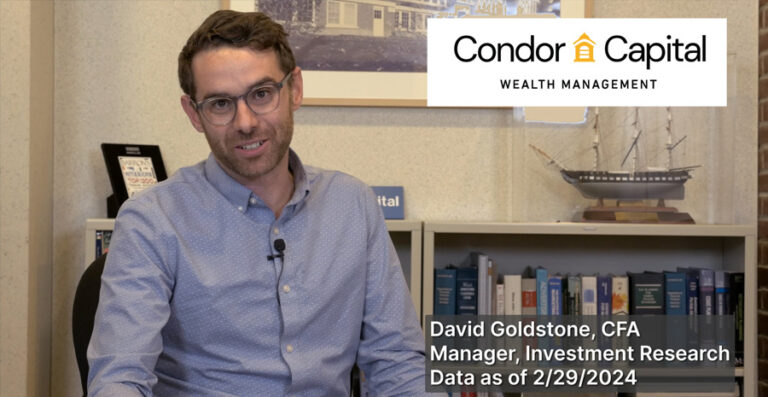At its September meeting, the Federal Reserve announced that it would begin the process of winding down its balance sheet. While the central bank is taking caution to chart a slow and gradual course, it marks a significant step in its plans to back away from quantitative easing and is likely to reverberate throughout financial markets as the unwinding progresses.
What is the balance sheet?
The Federal Reserve’s balance sheet is simply an accounting of the central bank’s assets and liabilities. In the wake of the Great Recession, the bank began a process known as quantitative easing to stabilize the economy, which included lowering interest rates and undertaking a large scale asset purchase program. The Fed’s purchases of assets, mainly Treasury and mortgage-backed securities (MBS), expanded its balance sheet significantly, from roughly $900 billion prior to the recession to roughly $4.45 trillion today. Broken down, the balance sheet now holds almost $2.5 trillion in Treasuries and over $1.7 trillion in MBS. While these purchases promoted ‘easier’ money via lower yields and provided liquidity to the markets in the wake of the crisis, they were always intended to be a temporary measure and recent economic data suggest such outsized asset holdings may no longer be necessary. The Federal Reserve confirmed this view at its September meeting.
What is the exact unwinding plan?
The Fed has been careful to outline its unwinding plan to investors in a very specific manner in an attempt to avoid another taper tantrum, where investors’ fears that the Fed would abruptly pull back its stimulus caused treasury yields to spike suddenly. Because the central bank has been reinvesting securities as they mature to maintain the balance sheet’s size, it believes that beginning to ‘wind down’ these reinvestments is a less disruptive way to shrink the balance sheet than selling off securities directly. It began the process this October, allowing $10 billion ($6 billion of Treasuries and $4 billion of MBS) to run off without reinvestment each month. These amounts will increase by another $6 and $4 billion, respectively, each quarter until hitting a maximum of $50 billion ($30 billion of Treasuries and $20 billion of MBS).
What is it likely to mean for markets?
While it is essentially impossible to predict how the individual traders that make up financial markets will react to these developments, we can glean some insight from both the market’s reaction to the initiation of the asset purchase program and broader monetary policy theory. Though there is much debate over the extent of quantitative easing’s impact, it is generally accepted that the Fed’s asset purchases have pushed down both yields and mortgage rates. Additionally, many market observers believe that the policy has incentivized investors to add risk elsewhere in their portfolios, including corporate debt and equities.
Within the market for Treasuries, Federal Reserve economists have estimated that post-recession Treasury purchases have suppressed the yield on the 10-year by between 0.85% and 1%. With the 10-year’s current yield of 2.37% (as of 12/4/17) practically unchanged since the Fed’s September announcement, this implies that it could move almost a full percentage point higher over the long-run due to the Fed’s unwinding. A recent analysis from Goldman Sachs puts this effect closer to 0.6%, though its timeline for the analysis is nearly four years shorter than the Fed’s. Another important factor to note is the forward-looking nature of markets, meaning that this yield increase could potentially be priced into these securities before the balance sheet is fully unwound.
As with Treasuries, any unwinding of the Fed’s MBS holdings will reduce overall demand, causing prices to fall and investors to demand higher yields on these securities, sending mortgage rates higher. While the link between the central bank’s asset purchase program and mortgage rates is a bit more tenuous than with Treasuries, former Fed Chairman Ben Bernanke and many other economists have credited the increased demand provided by the asset purchases with helping to push mortgage rates lower. Accord-ing to Citigroup, the supply of MBS in 2018 could be as high as $478 billion, thanks in large part to $168 billion expected to roll of the Fed’s balance sheet. Such an amount would be over 50% higher than the market has absorbed in any one year over the last decade. While large financiers such as banks, fund managers, and international investors appear poised to step in and scoop up at least some of these securities as they run off of the Fed’s balance sheet, it remains to seen how much of this newfound supply these groups will be able to absorb. As economics dictates, if demand can’t pick up enough to prevent the MBS market from becoming oversupplied, prices would fall and yields (which move inversely with price) would be sent higher.
Perhaps the most important, and debated, result of the Federal Reserve’s balance sheet wind down will be its effect on the stock market. The general argument for why quantitative easing has an effect on equities is that it stabilizes markets and drives down yields, sending investors into other, riskier types of securities to generate higher returns. While there are a vast number of factors that influence stock prices, domestic equity markets’ post-recession gains certainly do not contradict this logic. If we assume that the Fed’s Treasury and MBS purchases did in fact play a part in inflating equity prices, the question then becomes by how much. Donald Luskin, CIO of Trend Macrolytics, posits that the Treasuries and MBS that the Fed added to its balance sheet are roughly ¼ as volatile as stocks. Using this ratio, he states that every $4 of asset purchases by the Fed enabled $1 of additional risk-taking in equity markets. By this calculation, $1.125 trillion (1/4 of the Fed’s roughly $4.5 trillion balance sheet) in equity gains are therefore the result of balance sheet expansion and could be at risk. While this number seems rather astronomical, keep in mind that it is only roughly 10% of the market gains since the recession.
So, what should I do to prepare?
While the prospect of rising Treasury yields, oversupply in MBS markets, and a 10% drop in stocks may sound terrifying, the reality for diversified, long-term investors is likely much more placid. First and foremost, it should be mentioned that the reason that the Fed feels comfortable pulling back from quantitative easing in the first place is that it feels the domestic economy is strong and relatively stable. Second, equity markets average a 10% drop, often referred to as a correction, once per year and a 20% drop once every 3.5 years. Yet over long-term time frames, stocks have generated positive returns consistently. Finally, investors should take heart in the fact that the Fed’s newest actions have long been monitored and anticipated by firms like Condor. For example, we have already taken steps to brace clients’ portfolios for the Fed’s retreat from quantitative easing by selectively shortening duration and paring exposure to REITs, among other things. Overall, the Federal Reserve’s announced changes to its balance sheet are notable, but not unexpected or problematic.



